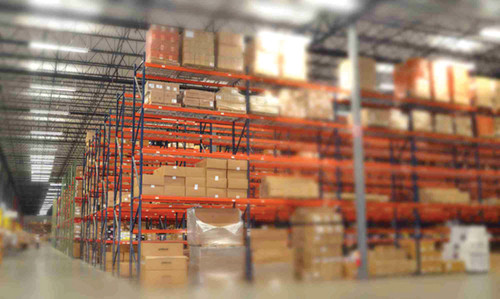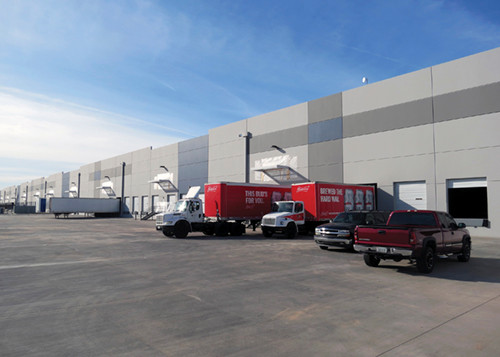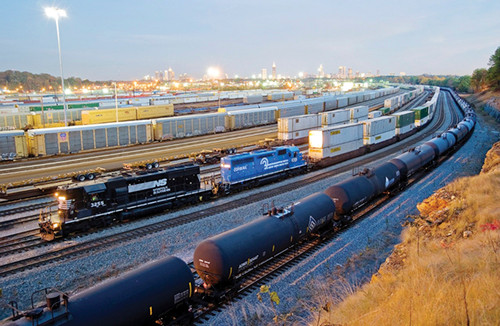Logistics development in need of a general committee
Thời sự - Logistics - Ngày đăng : 12:29, 19/12/2017
(Vietnam Logistics Review) In the 4th meeting session of the Assembly term XIV, many delegates suggested turning logistics service sector an economic breakthrough. Although it is not the first time the issue is mentioned, there has been a change in awareness of the service sector: there should be a National Logistics Committee.
There has not been a breakthrough
Logistics is an important service sector in the structure of a national economy, playing an assisting role, connecting and pushing up social-economic development in regions and nationwide, and improving competition abilities of an economy. However, after 10 years joining WTO, Vietnam logistics sector has not had a breakthrough at all. Why?
Researches showed Vietnam logistics sector is comprehensively weak in terms of policy system, legal system on logistics services, infrastructures, business abilities, service qualities, markets and human resource…

The national highway system so far has been 21,100 km- a rate of 4% of total length of all roads- and 741km of expressway. Vietnam has over 3,200km of seaway but there are only a few places that are able to receive large vessels of high cargo capacity as Hai Phong, Da Nang, Nha Trang, Ba Ria- Vung Tau, HCMC… Ports with the best infrastructures as Cai Mep- Thi Vai has exploitation capacity of less than 20%.
Incomplete statistics from Vietnam Logistics Association showed there have been 1,300 logistics businesses operating. Vietnamese enterprises (mostly small, medium or even super small sized ones) account for 80% of the quantity and 20% of the market. Their registered capital is around VND 4-6bn. Small and medium sized enterprises account for 72%. Most Vietnam logistics enterprises have no property, investments on equipment and means of transport are around 16% and on warehouses are around 4%. Most of them have chosen outsourcing. On the contrary, foreign capital invested enterprises are a few in number but hold 80% of the market.

In term of training, according to Tran Thanh Hai- Deputy Director of Import Export Administration, the Ministry of Industry- Commerce, laborers who has professional training are few in number. There have been around 15 units having logistics training at university level, post- graduated level and vocational level. However the number of teaching staff is small and there have been the lack of practical knowledge. Most logistics companies have to retrain their human resources through practical work.
Statistics from World Bank (WB) on logistics sector showed in 2014, Vietnam’s logistics performance Index (LPI) was ranked 48 out of the total of 160 countries, higher than those of countries’ in ASEAN region: Indonesia, Laos and Cambodia. The rank then went down to 64/160.
It is noticeable that logistics activities have influences to all sectors of transport, industry, trading, finance, customs, tax, medicine, agriculture, training… However, there has not been cooperation under the control of a “real conductor”.
Great potential
Nguyen Quoc Binh- Delegate of Hanoi Delegation- said Vietnam’s total logistics value is equally 21%-25% of the national GDP- much larger than that of manufacturing industry. Making good use of it will be a solution for a fast, stable developing GDP and for improving competition abilities of the economy.
According to Binh, Vietnam has great potentials to develop and become a regional logistics center: it is located in the center of Asia- Pacific area in terms sea transport and air transport; it is located on the way of main cargo flows of the world. There have been over 65,000 vessels going through the East Sea annually, transporting 50% of the world’s total amount of oil and import-export cargo. Vietnam has many ideal places for deep-water ports and transshipment airports…

There have been positive changes in logistics infrastructures- an important element factor- for the past 5 years. There have been more investment to road systems, sea ports and logistics centers. Besides 741 km of expressway being exploited, many routes have been being invested with the capital estimatedly of VND 329,300 (around USD 18bn) to the year of 2020. The Government has already had remarkable budget for expanding existing airports or building new ones, Long Thanh airport, for example.
Besides logistics-related procedures have been noticeably improved: 21 days for implementing cargo declaration procedure in 2013 was shortened to 10 days in 2016. However, for sustainable development and cutting cost, it is not enough.
Tran Thanh Hai, Deputy Director of Import-Export Administration, the Ministry of Industry- Commerce said Vietnam has enough conditions to develop logistics and bring it to a new stature for our import- export market is busy, with total import-export turn-over of over USD 300bn in 2016 and the number keeps growing in the following years. Improving logistics quality will be a push to Vietnam export field.
According to Hai, cargo waiting for being imported/ exported in a day results in 4% of reduction in trade. Therefore, current limits in logistics and trade have been huge obstacle in the strategy of economic development.
| Vietnam has great potentials to develop and become a regional logistics center: it is located in the center of Asia- Pacific area in terms sea transport and air transport; it is located on the way of main cargo flows of the world. There have been over 65,000 vessels going through the East Sea annually, transporting 50% of the world’s total amount of oil and import-export cargo. |
Why should there be a logistics committee
Benefits from logistics sector are obviously huge. Causes of weakness have been clearly aware but there has been no policies, no synchronous mechanism for the sector’s activities.
In the sector management, there have been many projects on logistics. The Ministry of Transport developed the Project of Developing Logistics Sector in The Field of Transport TO 2020, orientation to 2030 and it was approved by the Government by the Decision no,169/ QĐ- TTg dated January 22nd, 2014. Meanwhile, the Ministry of Industry- Commerce developed the Action Plan to Improve Competition Abilities and Develop Vietnam Logistics Services to 2015, approved by the PM by the Decision no.200/QĐ-TTg dated February 14th, 2017.
Or in July 2015, the PM promulgated Decision no.1012 on approval of Planning for Developing Logistics Center System on the Country to 2020, orientation to 2030 suggested by the Ministry of Industry- Commerce.
Although there have been difference in targets and duties in each document, they have the same target: developing the logistics sector to catch up with that in the region and improving competition abilities in the situation of global integration.
Many experts said in accordance to these documents, it takes time and money for each sector in local area to implement them but they have not been effective enough.
According to Binh, to overcome these limits the Government should change their ideas on logistics management and developments. The Government should have central control of logistics, possibly through a national logistics committee. Therefore they can make good use of logistics potentials and resources to improve competition abilities of the economy and development.
